BLOG
State of Smart Building Technology in HVAC


Smart building technology was a hot topic at the 2023 AHR Expo in Atlanta. Some of the top innovators in the HVAC industry spent three days in early February sharing ideas and showcasing the future of technology in the HVAC industry.
Very had the privilege of attending the expo with a client. As analytical problem-solvers, we’re curious about the pace of digital transformation across industries. Our team wanted to know if the anecdotal comments we’ve heard from our clients who’re building smart HVAC technologies are representative of challenges faced by the industry at large.
It turns out, they are.
“The industry changes so slowly, but technology changes constantly,” said Victoria Garcia Massimo, operations manager for Airzone. “It’s important to bridge the gap between industry and tech so the things we build don’t just work with today’s technologies, but also the standards and protocols that will be adopted in 10 years.”
To move from anecdotes to data, we conducted a survey during the expo. The results are interesting.
Many HVAC businesses haven’t decided on their path to digital transformation — or aren’t even considering it. However, for those actively pursuing digital transformation, things are going well.
Some common themes emerged among those who reported struggles along the way. We’ll unpack them in this post and introduce potential solutions.
Key Takeaways from the Survey
Supply Chain Issues Remain a Concern

The overwhelming majority of HVAC companies surveyed during the expo named supply chain constraints the leading professional challenge facing their teams in the coming year. Other key concerns include budgetary constraints, a shortage of staff, and a lack of specialized skill sets.
Adoption Levels for Smart Building Technologies Vary Widely
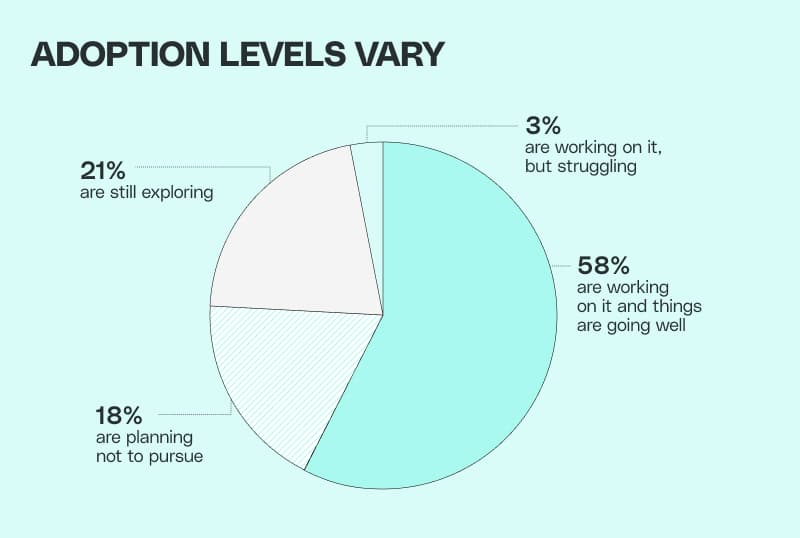
Survey respondents reported various degrees of adoption levels for smart building management or building automation technology.
The great news is that the majority (~58%) are either currently working on it with good results, or are well ahead of the curve, and only 3% reported that they’re struggling with adoption. The majority of those who have made the leap are feeling good about it.
However, a little over 21% are still in an exploratory phase, and 18% are not planning to pursue these technologies. This represents nearly 40% that either haven’t yet committed to a path for change, or aren’t even considering it.
Those Struggling Through Adoption Face Several Challenges
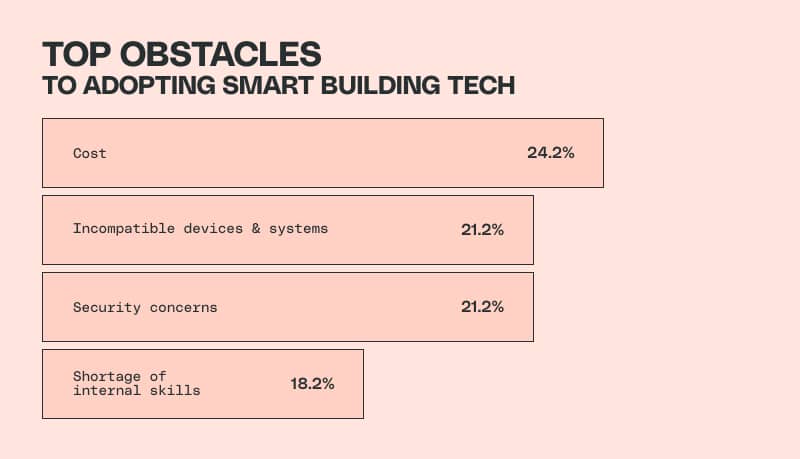
Within the 3% of respondents that reported they were struggling through the adoption process, the top obstacles were:
- Cost
- Incompatible devices and systems
- Security concerns
- Shortage of internal skills
Respondents Want To Know More About Certain Disciplines
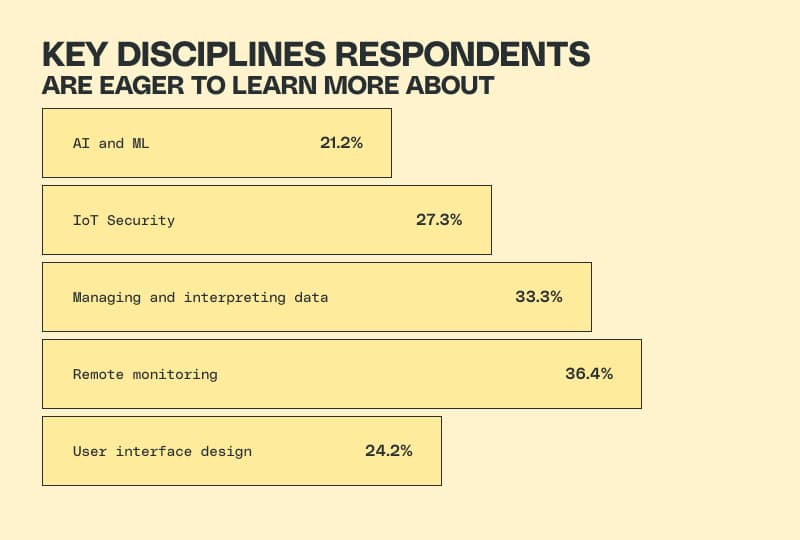
Regardless of where they were in the process, respondents expressed a hunger to learn more about particular disciplines that play key roles in smart building and building automation technologies. Those topping the list were:
- AI and ML
- IoT security
- Managing and interpreting data
- Remote monitoring
- User interface design
Dealing With the Challenges Identified
Pushing through the challenges facing the HVAC industry requires a commitment to problem-solving and innovation.
Very recognizes that every situation is unique — and typically complex. But complexity doesn’t have to equal failure. Through our experience building smart devices and connected systems, we’ve developed proven approaches that decrease risk in any project.
Here are several approaches you can use.
1. Supply Chain Constraints – the Elephant in the Room
During the height of the pandemic, supply chain constraints stressed industries across the board. Bottlenecks with parts and labor shortages combined to significantly disrupt the global supply chain.
Although Gartner predicts some relief in the back half of 2023 within the semiconductor market, lingering issues in the supply chain continue to prove a stubborn thorn in manufacturing’s side. Among the newest challenges are geopolitical conflicts, inflationary pressures, and a global economy teetering on the brink of recession.
“Availability of parts is a huge challenge for the industry,” says Mike Boyd, a product manager with Weil-McLain. “It’s always a battle to try to get the parts these days.”
There is no magic solution to this complicated global issue. However, there are ways to mitigate the impact. Very relies on Agile engineering methods to help deal with unpredictable supply chain issues.
Agile engineering enables both software and hardware engineers to iterate quickly and make changes to the design as needed. Hardware flexibility is particularly critical during supply chain disruptions because it allows a product to evolve and exist on multiple platforms.
It also empowers manufacturers to quickly adapt to new supply chain realities and maintain a steady flow of materials.
2. Lack of Specialized Skill Sets
Boyd goes on to share, “In our industry, the old guard is aging out, and new people are coming up. They’re tech-savvy, but their abilities aren’t the same as people who’ve been working on boilers for 30 years. We’re using technology to bridge that gap.”
He, and numerous others we’ve spoken to, recognize that developing smarter technologies is key to dealing with a loss of institutional knowledge. Developing those technologies isn’t simple, however. It typically requires IoT engineering — which involves unique expertise that traditional engineers and developers lack.
Developing smart building technology doesn’t require an engineer to have expertise in every part of the stack. However, they must at least have fluency in all of them. In general, a well-prepared IoT engineer has deep expertise in one or two subdomains, and basic competency in the others.
Subdomains include:
- Data science
- Electrical engineering
- Firmware engineering
- Mechanical engineering
- Software engineering
- UX design
If you’re embarking on a smart or connected project, make sure you have true IoT engineers on board — either on staff, or as business partners for your team. It’s critical that your engineering team understands how all these pieces fit together to form a cohesive whole.
3. Cost
With a prediction of 575 million connected devices across the globe by 2032 and $29 billion in revenue, the connected HVAC industry is expected to show significant growth. Despite the revenue opportunities, survey respondents, and many of our clients, report that the investment to deliver on those opportunities is challenging, particularly in today’s economy.
How do you make the most of limited resources?
When you’re facing a complicated development process and the best path isn’t initially clear, an Agile engineering approach is one important tool for clearing hurdles effectively and efficiently.
Don’t make the mistake of investing big into a project plan that won’t show weaknesses until you’ve made choices that are difficult to undo. Leverage Agile design and development instead.
Agile methodologies — including extensible, flexible code and early hardware prototypes — make it easier to surface issues early, so you can iterate rapidly and deliver business value sooner.
4. Incompatible Devices or Systems
Dealing with incompatibility is an intricate topic with nuances that depend on the use case. Are you building a smart HVAC product? Are you integrating building systems as part of a building automation system (BAS) project? Let’s explore some options.
Preventing Incompatibility During Product Design
At Very, we’ve seen first-hand how an ounce of prevention is worth a pound of cure. The last thing you want to discover after you’ve started building your smart HVAC product is that it won’t integrate with key systems. Before you start building, thorough market research is critical for avoiding incompatibility.
During market research, dig deep to determine not only what users want and need, but also what technologies you’ll need to integrate with. As a best practice, we recommend that your design team leads market research that includes members from engineering who can help uncover critical technical insights.
Solving Existing Incompatibility
But what if you’re integrating existing devices and systems? Let’s say you have a building running multiple HVAC systems that communicate on different protocols. One potential solution is to implement a protocol gateway. A protocol gateway can act as a translator between two different protocols, allowing the devices or systems to communicate with each other.
This solution doesn’t work for everyone, however. Some of the barriers to using this approach include:
- A system may not have an integration path for the gateway.
- The gateway may not support all the necessary BAS functions.
- The gateway may use an older BACnet protocol that wasn’t implemented in a standard fashion.
Sometimes the optimal solution from a performance standpoint is to upgrade your devices and systems — not a cheap proposition. But before you make that leap, or abandon the integration altogether, the gateway approach is worth exploring.
5. Security Concerns
Given the multitude of devices and systems within commercial facilities that impact not only physical safety, but also professional productivity, smart building technology understandably elicits concerns about security risks. If ever there was a situation in which you absolutely do not want to learn “the hard way,” security for smart buildings is it.
Even though security isn’t simple, and can never be guaranteed to be perfect, thankfully there are well-documented strategies for securing connected systems. It requires a comprehensive approach covering several dimensions — physical devices, firmware and software, the network, and the data touch points.
For the in-depth exploration this topic deserves, start with our security whitepaper, “What Engineering Leaders Need To Know About IoT Security.”
Navigating the Path to Innovation and Value
Smart building technology presents an immense opportunity for the HVAC industry. But for many, the path to realizing that value is elusive.
Very understands the challenges you’re up against and has the experience to help you overcome them. If you’d like help navigating the path to value-driven innovation with smart building technology, our team can guide you through the process.
Raw Survey Results
The survey was conducted in Feb 2023 at the AHR Expo. The AHR Expo is the essential event for HVAC professionals, attracting the most comprehensive gathering of the industry from around the globe each year. We received 33 responses from respondents primarily based in the U.S.
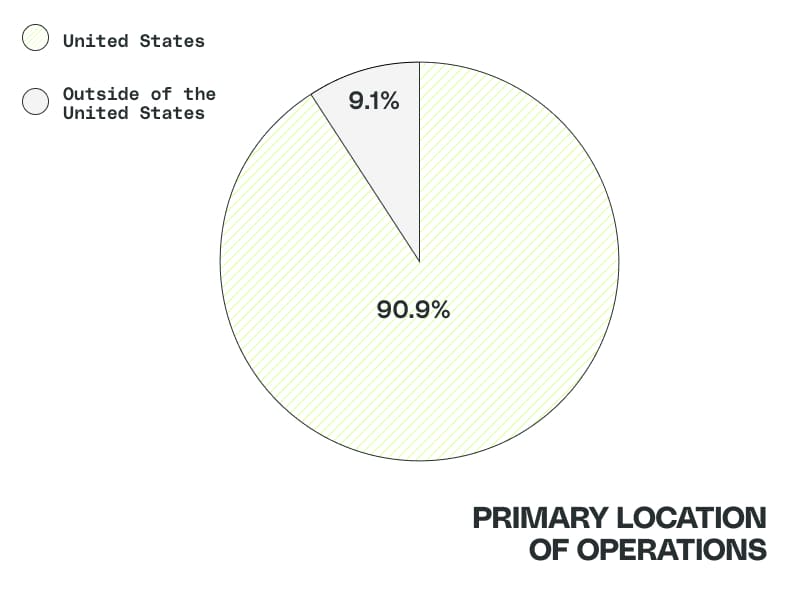
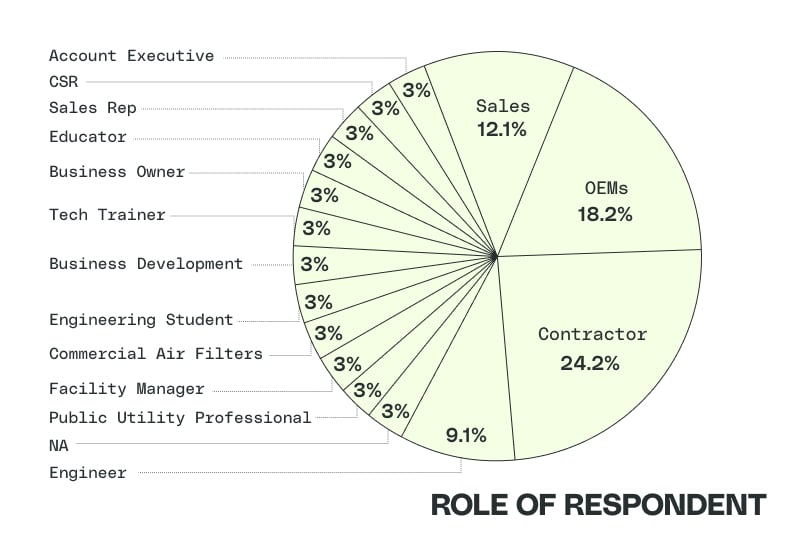
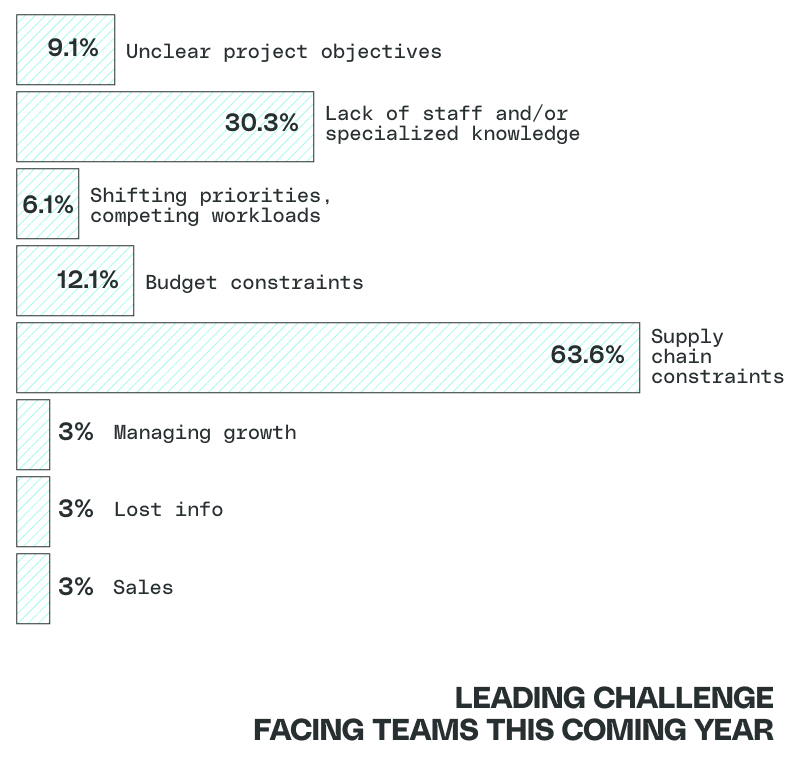
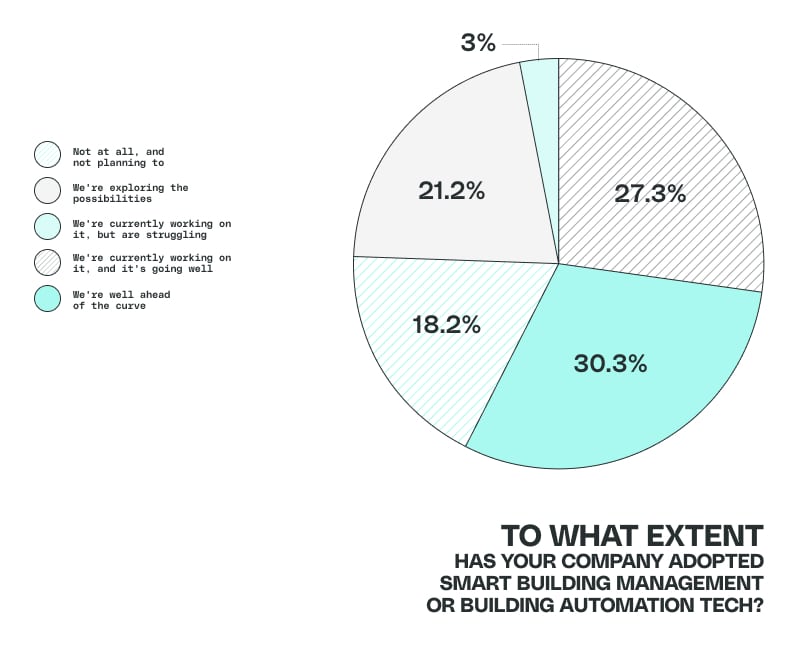
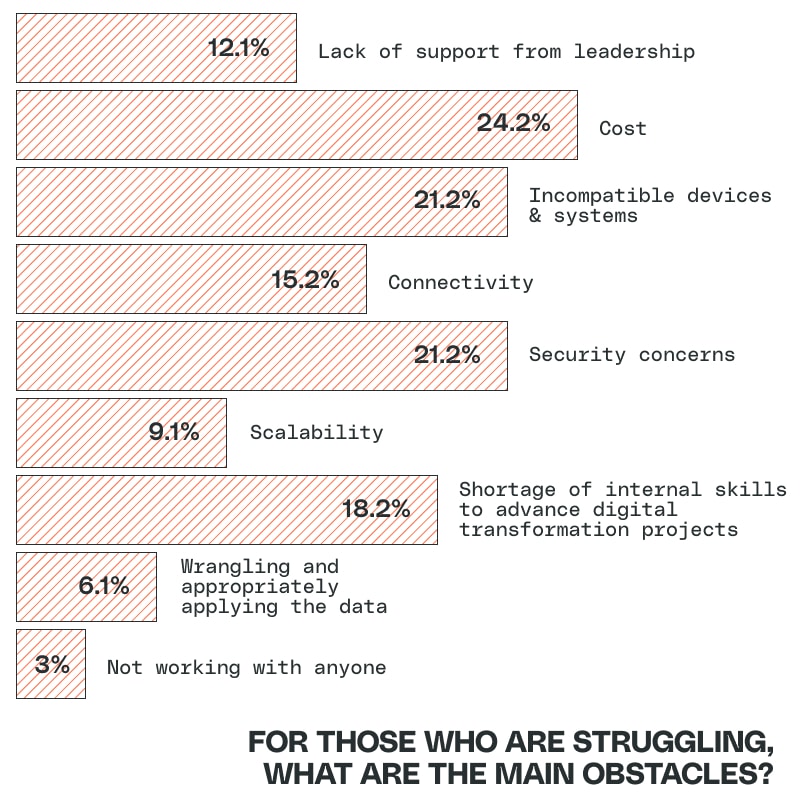
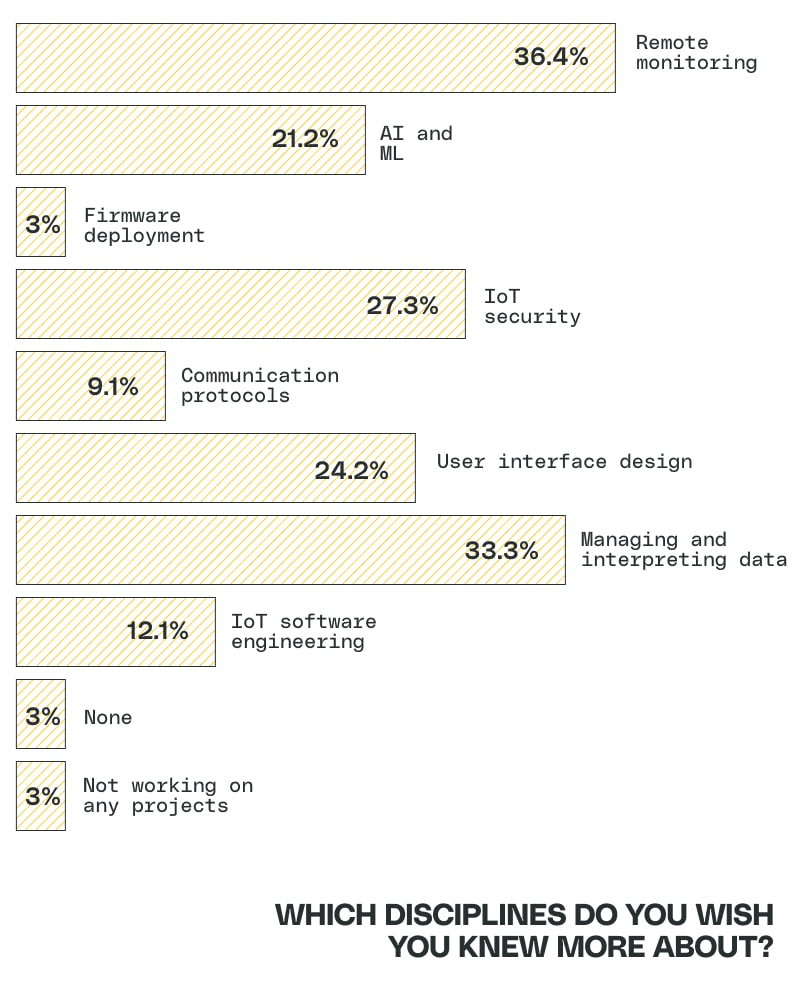
KEEP READING: Discover how your business can enhance its connected HVAC system’s performance by delving into our comprehensive guide.








